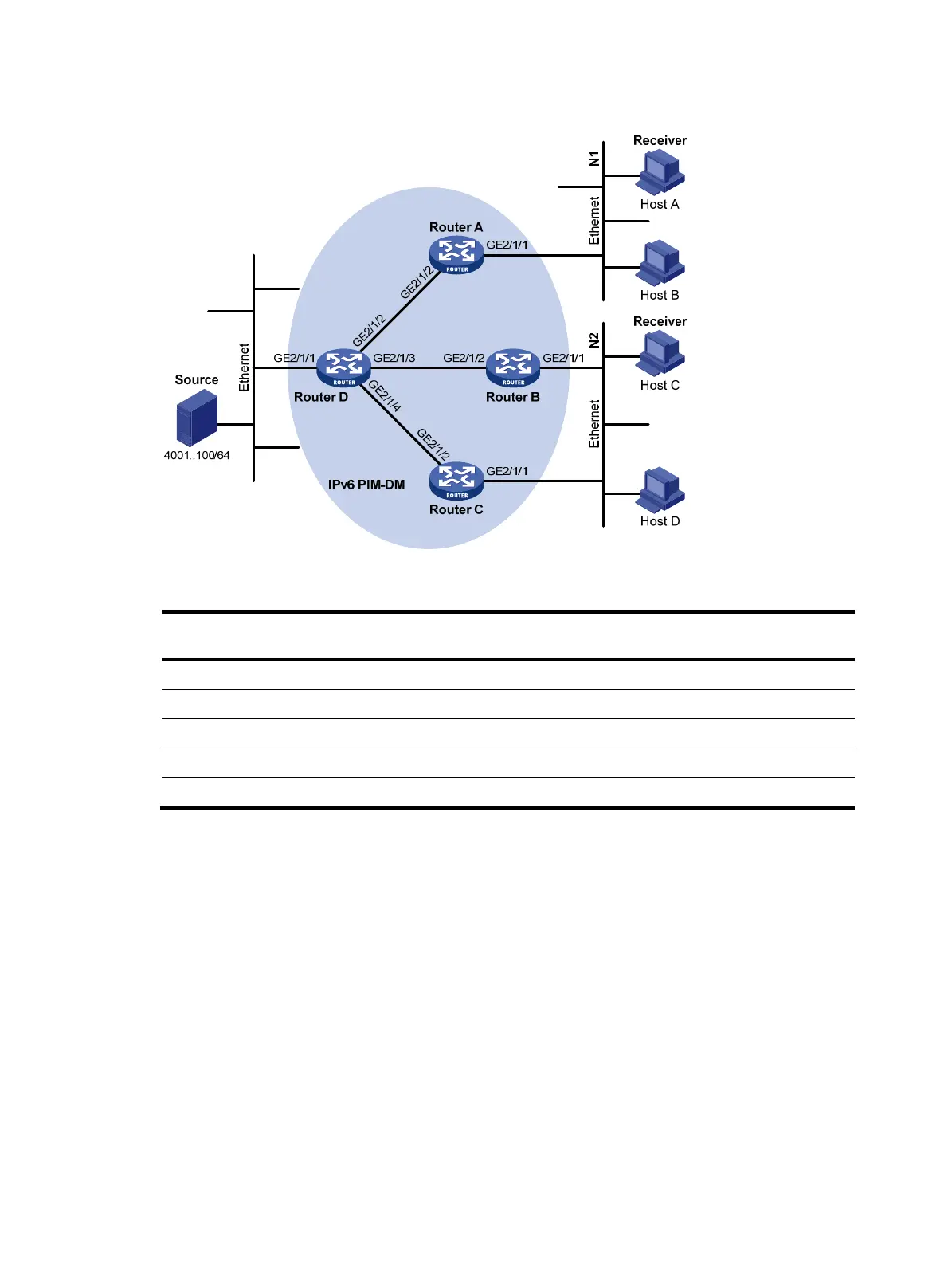314
Figure 97 Network diagram
Table 21 Interface and IPv6 address assignment
Device Interface IPv6 address
Device Interface
IPv6
address
Router A GigabitEthernet 2/1/1 1001::1/64 Router C
GigabitEthernet 2/1/2 3001::1/64
Router A GigabitEthernet 2/1/2 1002::1/64 Router D
GigabitEthernet 2/1/1 4001::1/64
Router B GigabitEthernet 2/1/1 2001::1/64 Router D
GigabitEthernet 2/1/2 1002::2/64
Router B GigabitEthernet 2/1/2 2002::1/64 Router D
GigabitEthernet 2/1/3 2002::2/64
Router C GigabitEthernet 2/1/1 2001::2/64 Router D
GigabitEthernet 2/1/4 3001::2/64
Configuration procedure
1. Assign an IPv6 address and prefix length to each interface according to Figure 97. (Details not
shown.)
2. Configure OSPFv3 on the routers in the IPv6 PIM-DM domain to make sure the following conditions
are met: (Details not shown.)
{ The routers are interoperable at the network layer.
{ The routers can dynamically update their routing information.
3. Enable IPv6 multicast routing, MLD, and IPv6 PIM-DM:
# On Router A, enable IPv6 multicast routing.
<RouterA> system-view
[RouterA] ipv6 multicast routing
[RouterA-mrib6] quit
# Enable MLD on GigabitEthernet 2/1/1 (the interface that connects to the stub network).
[RouterA] interface gigabitethernet 2/1/1

